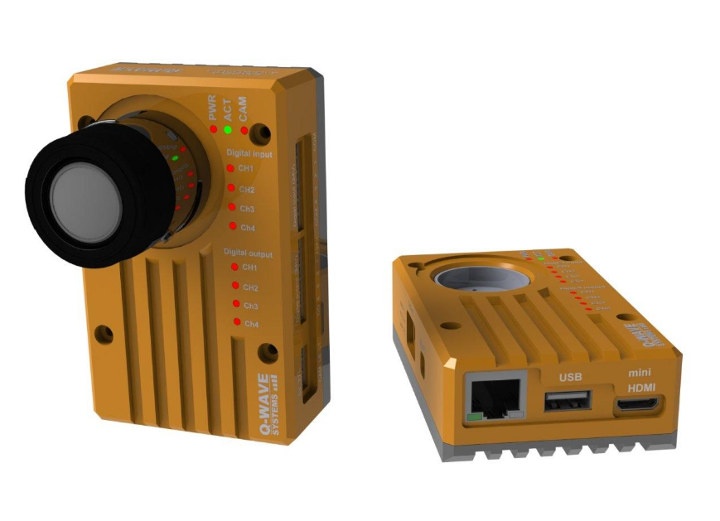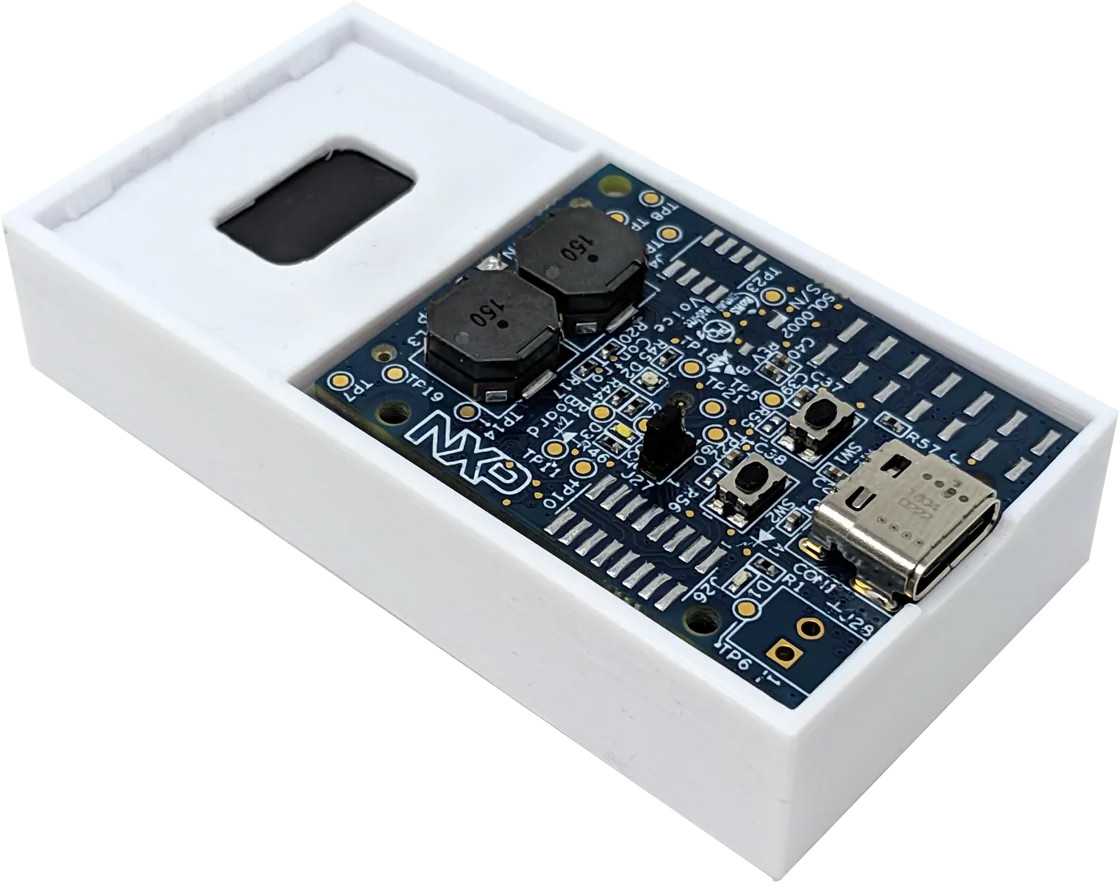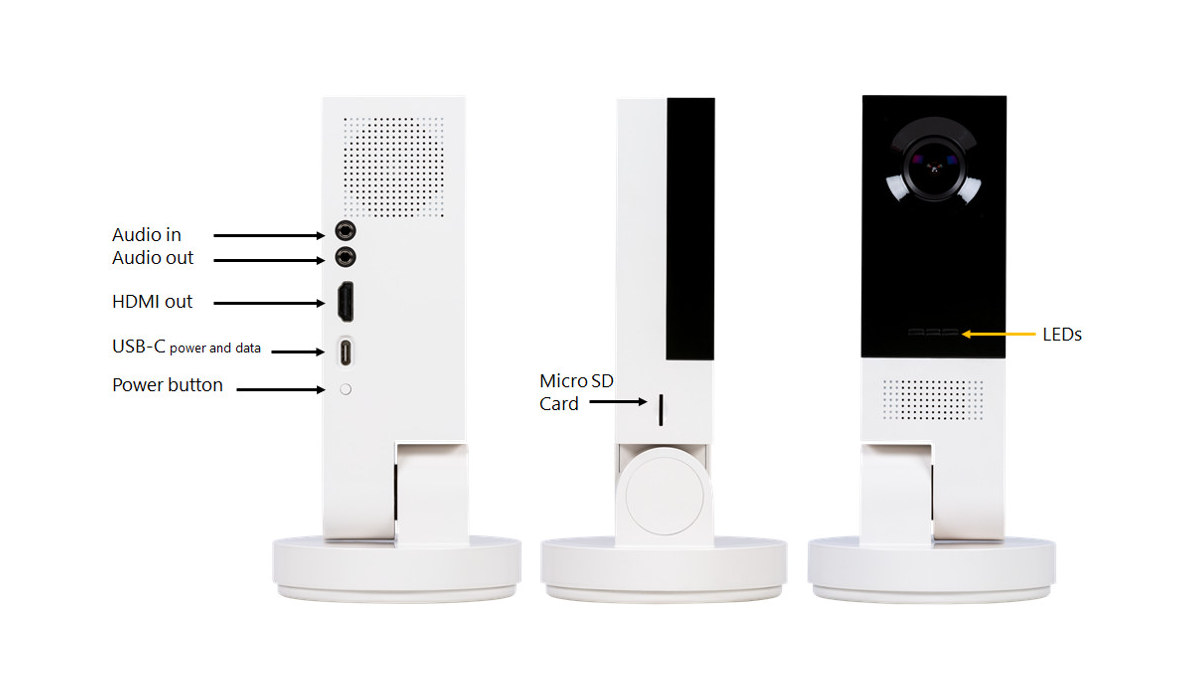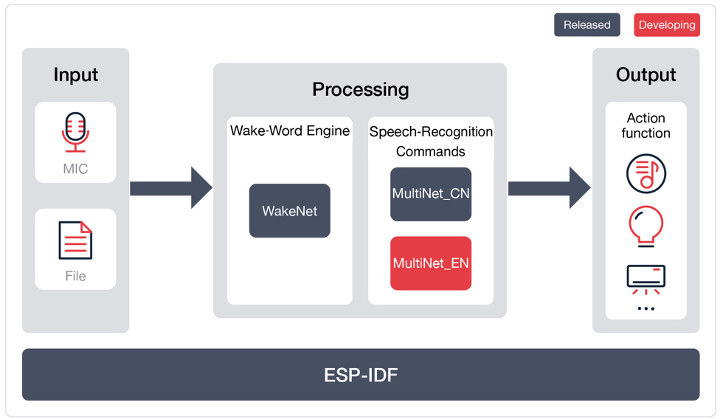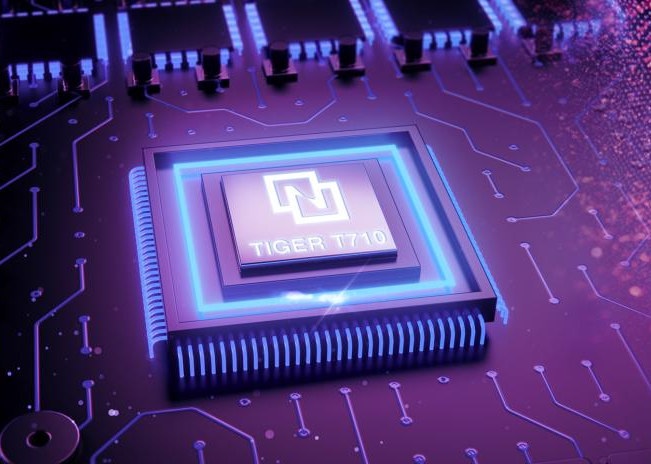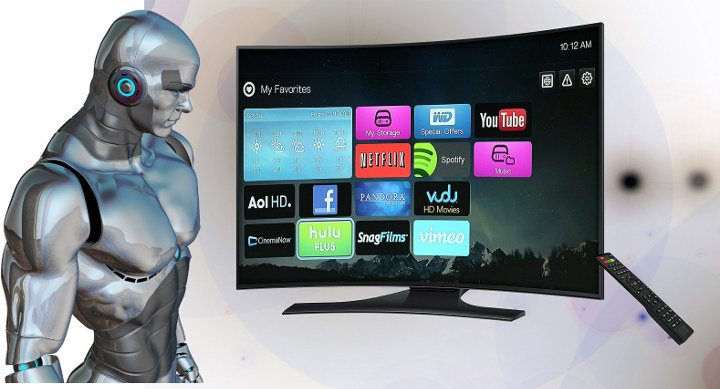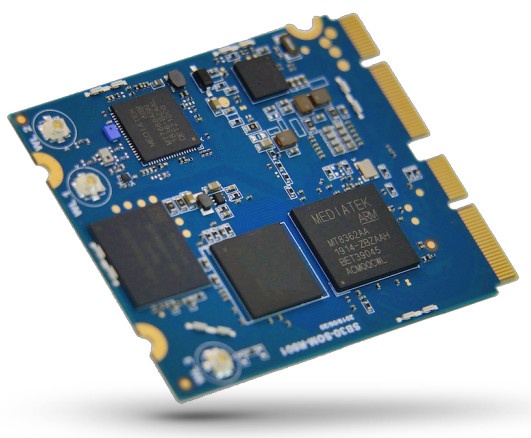We previously covered Q-Wave Systems’ Melon S3 board combining a Xilinx Spartan 3E FPGA with ESP8266, but the Thai company is back is a completely different product: EagleEye Smart Camera. The board is powered by Raspberry Pi Compute Module 3+ (CM3+) with 16GB or 32GB flash, and equipped with a 5 MP camera for machine vision and robotics applications. There are two version of the board Uno and Industrial with the latter adding 24V digital input and outputs, circuit protections and support for industrial temperature range. EagleEye smart camera key features & specifications: SoM – Raspberry Pi CM3+ with Broadcom BCM2837B0 quad core cortex-A53 processor, 1 GB RAM, and 16GB or 32 GB flash Camera – 5 MP OV5647 image sensor, CS/M12 lens holder + 4mm CS lens Video Output – mini HDMI port Networking – 10/100M Ethernet USB – 1x USB 2.0 host port up to 1.2A Expansion Uno […]
NXP i.MX RT106F & RT106A/L Cortex-M7 Processors Target Offline Face Recognition & Smart Audio Applications
NXP i.MX RT crossover processors combine real-time capabilities of microcontrollers with the performance of application processors thanks to an Arm Cortex-M7 core clocked at 528 MHz and more. The performance is indeed impressive as shown by Teensy 4.0 benchmarks, but so far NXP i.MX RT processor targeted general purpose applications. The company has now introduced three new crossover processors designed for AI applications. NXP i.MX RT106F is designed for offline face recognition and expression Identification, while RT106L and RT106A are made for local and cloud-based embedded voice applications. NXP i.MX RT106F Processor Highlights of the processor: CPU – Arm Cortex-M7 @ 600 MHz (3020 CoreMark/1284 DMIPS) Memory – 1 MB On-Chip SRAM plus up to 512 KB configurable as Tightly Coupled Memory (TCM) External memory interface options – NAND, eMMC, QuadSPI NOR Flash, and Parallel NOR Flash Real-time, low-latency response as low as 20 ns Industry’s lowest dynamic power with […]
Microsoft Unveils The Vision AI Developer Kit For AI on the Edge
The field of Artificial Intelligence is getting more exciting every single day, and the big corporations and startups are massively pouring for it. One thing I am undoubtedly sure about is that the future will certainly be remarkable. Microsoft, the biggest software company in the world with sales over $100 billion has been venturing in the domain of artificial intelligence for a while now with cloud computing platform Azure and other related cloud computing services, but instead of its usual cloud computing route for AI, Microsoft is banking on AI on the edge with the introduction of the Vision AI Developer Kit in joint partnership with the semiconductor giant Qualcomm. With millions of data collected at the Edge, the potential of artificial intelligence on the edge is promising. AI cases performed on the Edge will help in making critical decisions, and more data insight can even facilitate important business scenarios. […]
CDVA (Compact Descriptors for Video Analysis) Enable “Video Understanding”
One of the most popular applications of artificial intelligence is object detection where you have models capable of detecting objects or subjects being cats, dogs, cars, laptops, or other. As I discovered in a press release by Gyrfalcon, there’s something similar for videos called CDVA (Compact Descriptors for Video Analysis) that’s capable of analyzing the scene taking place, and describe it in a precise manner. The CDVA standard, aka MPEG ISO/IEC 15938-15, describes how video features can be extracted and stored as compact metadata for efficient matching and scalable search. Gyrfalcon published a press release, their Lightspeeur line of AI chips will adapt CDVA. You can get the technical details in that paper entitled “Compact Descriptors for Video Analysis: the Emerging MPEG Standard”. CDVA still relies on (CNN Convoluted Neural Network) but do so but extracting frames first, append a timestamp and the encoded CDVA descriptor to the video, which […]
Espressif ESP-Skainet Voice Assistant Offers Wake Word Engine and Speech Commands Recognition for Embedded MCUs
Skynet is finally here! OK, not quite, but at least we do have ESP-Skainet now courtesy of Espressif Systems. ESP-Skainet is an intelligent voice assistant that features the company’s WakeNet wake word engine and MultiNet speech commands recognition. WakeNet WakeNet has been specifically designed for low-power MCUs such as ESP8266 or ESP32 with a low memory footprint (20KB RAM) and a high calculation speed that makes it capable of achieving a high success rate for wake word detection even in noisy environments. Tested in the company’s upcoming LyraT-Mini audio board that combines an ESP32-WROVER-B module and a codec, WakeNet achieves a 97% wake word success rate at a one-meter distance, and 95% three meters away in a quiet environment. ESP-Skainet wake-up engine ships with the wake-up word “嗨乐鑫” (Hi Lexin), which translates in “Hello Espressif”, and supports up to five wake words. You can use customize wake words as well, […]
UNISOC Tiger T710 Processor with NPU for AI Edge Applications Tops AI-Benchmark Leaderboard
Last April, UNISOC introduced Tiger T310 quad-core Cortex-A75/A55 processor for 4G Phone, and the company has now added a new member to their Tiger family with T710 octa-core processor with four Cortex-A75 cores, four Cortex-A55 cores, and a dedicated NPU (Neural-network Processing Unit) for artificial intelligence applications at the edge in the industry, commerce, medical care, home, and education sectors. The company did not setup a product page, so information is really limited. Known features & specifications so far: CPU – 4x Arm Cortex-A75 cores at up to 2.0GHz, 4x Arm Cortex-A55 cores @ 1.8GHz NPU – Heterogeneous dual-core architecture NPU delivering 2.5TOPS per watt GPU – Imagination Technologies PowerVR GM9446 GPU also found in MediaTek Helio P90. The processor supports multiple AI framework formats, including TensorFlow, TensorFlow Lite, Caffe, and multiple AI data formats such as quantization (INT4, INT8, INT16) and floating-point (FP16). Tiger T710 also works with Android […]
MPEG Video Coding for Machines (VCM) is in the Works
A video codec for machines seems like a good topic for the first of April, or an article on the Onion. But based on a recent press release by Gyrfalcon Technology, this may become a real thing as the company partnered with China Telecom, and proposed a new video codec called “Video Coding for machines” (VCM) that provides compression coding for machine vision and human-machine hybrid vision. Apparently a recent study published by Cisco in 2018, humans will become bit players in the “video watching business”, and Machine-to-Machine (M2M) applications will represent the greatest usage of Internet video traffic over the next four years. So the goal of the VCM group will be to establish a new standard that will improve the previous generation video coding and decoding standards such as H.264 (AVC), H.265 (HEVC) and H.266 (VVC). Few details are provided so far, and I can’t find any VCM […]
Innocomm Unveils MediaTek i300/i500 SoMs for IoT and AI Applications
SB30 MTK i300 and SB50 MTK i500 AI IoT Platforms Just announced by Innocomm are the SB30 and the SB50 SoMs carrying the MediaTek i300 and i500 SoC’s, and running either Linux or Android. The rundown on the systems is the MediaTek AIoT processor series has been out for some time, and we reported on the latest SoC in the MediaTek i700 article last July. Innocomm is also known for its NXP-based compute modules such as the i.MX8M Mini driven W15 and i.MX8M powered W10. MediaTek i300 Specs The MediaTek i300 (MT8362) SoC is running a Cortex-A35 power-efficient quad-core processor clocking at 1.5 GHz. The SoC is further equipped with an Imagination PowerVR Series8XE GE8300 GPU. The i300 also integrates a PMIC, an RF chip for 2.4 GHz 802.11/b/g/n as well as Bluetooth 4.0. There is support for the MediaTek MT7668 chipset for 802.11ac (WiFi 5). Rounding out the system […]


